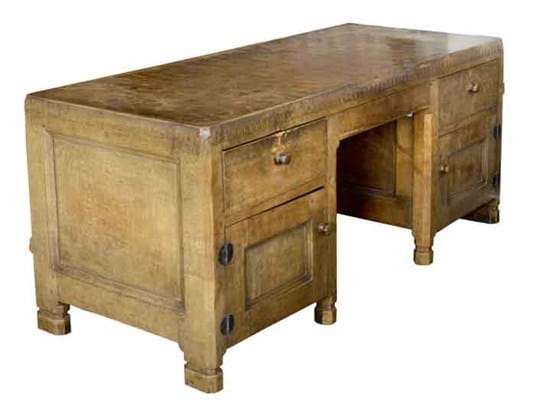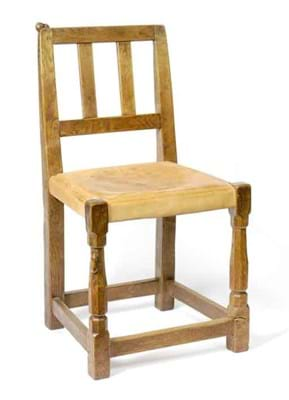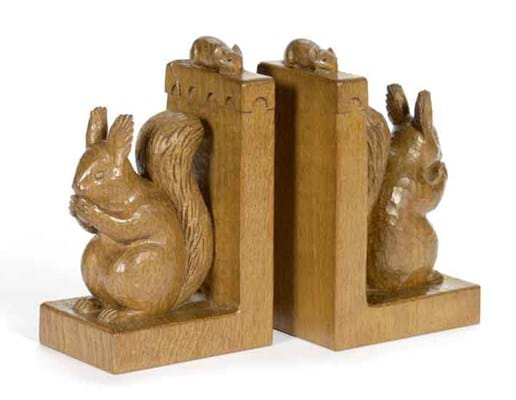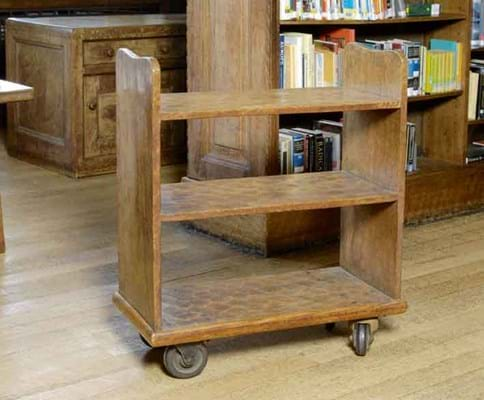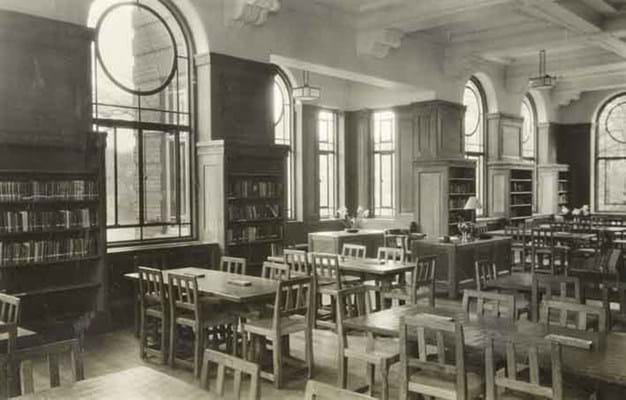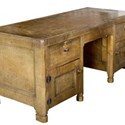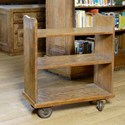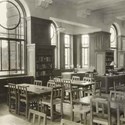They secured an entire Mouseman commission.
It was back in January when Tennants were invited - with four other firms - to tender to sell the fixtures and fittings of the Senior Library at Leeds Girls High School, completed by the Kilburn workshop from 1933-34 at a cost of £1222.
The school is now moving to a new site and, while elements of the old building are listed, no preservation order was placed upon the oak-panelled interior.
Evidently specialist Dianne Sinnott made an impressive pitch: while her global valuation of upwards of £100,000 was by no means the highest, her proposal of a showpiece sale fleshed out by original drawings, photographs and invoices (provided by Robert Thompson Craftsmen Ltd), secured the 87-lot consignment. No detail had been overlooked in the 1933 commission - paid for out of an anonymous gift of £6000 awarded in 1929, the school's jubilee year.
The wide-ranging assortment of pieces included fitted and free-standing bookcases, door surrounds, panelling, 16 tables, 87 chairs, an alcove seat, a book trolley, radiator covers, cupboards, inkwells, pen trays, book troughs, magazine cabinets and library steps.
All had been weathered and patinated by generations of schoolgirls and with sun damage the only negative to some pieces. Thirteen of the 87 chairs were carved with not one but two mice. Each mouse takes around 45 minutes to carve, so two of the little rodents represent an expensive investment of a craftsman's time and make these chairs rather scarce.
The most avidly contested examples were those with a mouse scurrying across the top rail and another protruding on the front leg. Estimated at £250-350 apiece, they set new price levels for single Mouseman dining chairs when they sold for up to £2300 each.
Strong yet simple in design, Mouseman furniture is also practical in size for most people's homes.
Proving the most commercial offering in the dispersal was a librarian's pedestal desk, 6ft (1.82m) wide, panelled with turned octagonal handles and wroughtiron hinges to the drawers and doors.
Tennants were able to publish an original drawing of the design showing its distinctive eight octagonal feet and castellated frieze. It left its estimate well behind to make £18,000.
This represents the highest price the auctioneers have realised for Mouseman since they sold a bookcase with burr oak panels in April 2001 for £2001. The record for Mouseman remains the remarkable $70,000 (£40,500) bid at Sotheby's New York for a two-section, oak cupboard c.1923 with elaborate metalwork by the Kirkby Moorside blacksmith Will Dawson. The desk, underbid on the internet, was acquired by the main buyer at the sale: a collector furnishing a recently-acquired Arts and Crafts house who took 21 lots.
Also on the shopping list was a 3ft 4in wide by 3ft 9in high (1.02 by 1.15m) cupboard, carved to each of the two doors with a five lattice panel and nine of the small-scale refectory tables made to a classic Thompson design with jointed adzed tops and two octagonal legs jointed by a stretcher at floor level.
The cupboard took a double-estimate £5000 and the tables cost between £5200 and £7000 each - the latter sum tendered for a particularly well-patinated example with a top measuring 4ft 6in (1.37m).
These were new price levels for what are relatively standard forms.
More unusual were the library steps with a recessed carved mouse signature, which made £1300, and a book trolley with shaped adzed ends enclosing three shelves on large steel wheels which sold at £1700. The trolley was unmarked but was ordered by the school as an extra in December 1933 and appears in the order book against a cost of £9 8s.
A number of items lacked the appealing mouse signature but nevertheless performed well - many selling to Leeds Girls High School old girls. The numerous simple adzed pen trays measuring 9 x 3in (24 x 8.5cm) were classic memory lane souvenirs and - even sans mouse - brought bids of between £180-200 per pair. Only the most architectural of pieces failed to excite the room.
While a large alcove corner seat with two finely carved shaped ends, one with the mouse signature, went to a bidder from Sussex at £4200 (estimate £2000-3000), there were no takers for either the room panelling or the internal and external door frame and doors. These were only ever going to command £10,000 each if a very specific buyer was found, but Tennants are hopeful of a private deal. In all, the Leeds consignment raised £236,000 - and there was more to come from a mixedowner selection.
Three other pre-War Kilburn lots are of particular note.
Sold at £3800 was a 'monk's' chair of a deep colour that was carved to the shield back with the initials CK and the date 1936.
Research at the Kilburn archives identified CK as one Cecil Kershaw of 200 Harehill Lane, also of Leeds. It took £3800.
A remarkable triple-estimate £3000 was bid for a pair of bookends, each carved as squirrels eating nuts and each with carved mouse signature, while, in the wake of the punchy prices paid for a group of 12 kidney-shaped bar tables from the Masons Arms, Hopperton in April, another example with a burr oak top was consigned from the officers' mess at RAF Leeming. It sold at £4200 against an estimate of £2500-3500.

